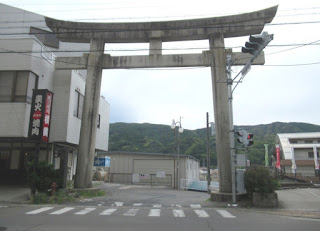Today I walked from Kanazawa, the 44th shukuba station from Tokyo (Edo), to Kamisuwa, the 45th and last station of Koshu Kaido.
Kanazawa is close to Aoyagi Station on the JR Chuo Line. Old buildings remain here and there along the Koshu Kaido. I found traditional inns and trading stalls.
The road passes through mountainous areas. The rice fields in this area are used to dry agar in winter. Chino City is famous for producing naturally produced agar. There was a large sign reading "Agar Village" in the rice field. (See also the top photo)
I walked for about two hours and reached the center of Chino City. There was a Shinshu Miso store on the side of the road, and a miso barrel was placed in front of the store.
There are many shrines along the road. Even small shrines often have four pillars at each corner in this region. Miwa Shrine, close to the center of Chino, is also surrounded by four pillars.
The Kamisha (upper shrines) of Suwa Taisha are located in this area, and the Maemiya (front shrine) of the Kamisha is in Chino City. The main shrine of the Kamisha is in Suwa City.
During the Onbashira Festival, which is held once every six years, giant cedar trees cut down in the mountains are transported to the shrine. One route passes through Chino City. On the way, the pillars with many people on them go down a steep slope. The place of the big downhill is maintained in the Kiotoshi Park.
I found a torii gate leading to Suwa Taisha Shrine in front of JR Chino Railway station..
The Yatsugatake Mountains looked beautiful from Kamikawa Bridge near the Kiotoshi Park.
After walking for about an hour from JR Chino Station, the Koshu Kaido entered Suwa City. The Northern Alps looked beautiful from the road.
I continued walking and entered Kamisuwa shukuba station. Kamisuwa is a major sake brewing area, and there are many sake breweries along the Koshu Kaido.

.JPG)

















































